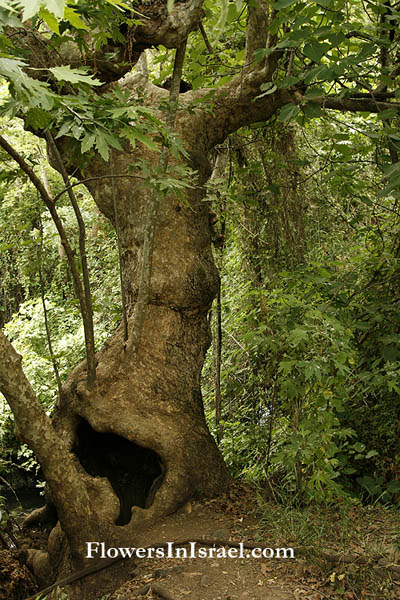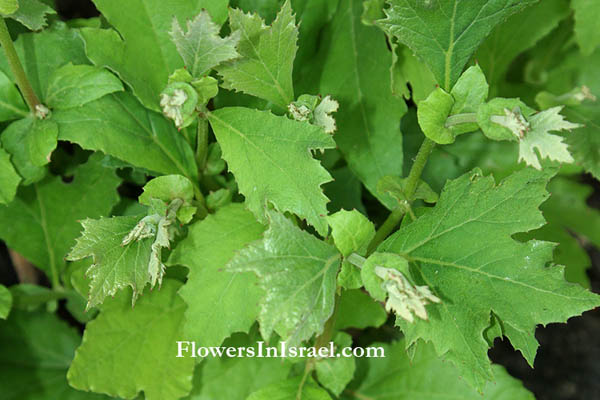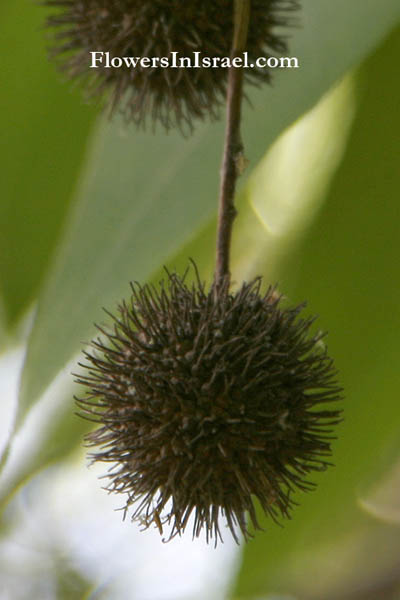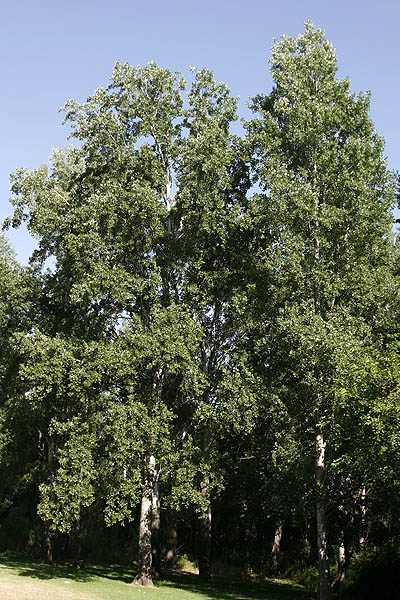Hebrew: דולב מזרחי, Arabic: الدلب المشرقي
| Scientific name: | Platanus orientalis L. | |
| Common name: | Oriental Plane Tree | |
| Hebrew name: | דולב מזרחי | |
| Arabic name: | الدلب المشرقي | |
| Family: | Platanaceae, דלביים |
 Location: Golan, Banias |
| Life form: | Tree | |
| Leaves: | Alternate, entire, dentate or serrate | |
| Flowers: | Green | |
| Flowering Period: | April, May | |
| Habitat: | Humid habitats | |
| Distribution: | Mediterranean Woodlands and Shrublands | |
| Chorotype: | Mediterranean | |
| Summer shedding: | Perennating |

Derivation of the botanical name: Platanus, πλατανοϛ, "the plane tree". orientalis, "eastern", "oriental"; of the East. The Hebrew name:דולב, dolev, from Aramaic, דולבא, dilba, and preserved the name in Arabic: دلب, Dulb. Kibbutz Kiryat Anavim, Dilb, so called because of a grove of plane (dolev) trees growing there.
Henry Baker Tristram (1822-1906) in The Natural History of the Bible: "Chestnut,- The Hebrew word, 'armôn, occurs twice in the Old Testament (Gen. XXX.37; Ez. XXXI.8). In both cases it is translated Chestnut in our version, but more correctly in the Septuagint, Plane tree, i.e., the Oriental Plane tree (Platanus orientalis). There can be little doubt of this rendering, which is supported by all critics. We never saw the Chestnut in Palestine, excepting planted in orchards in Lebanon; while the Plane tree, though local, is frequent by the sides of streams and in plains, both on the coast and in the northern parts of the country. The 'armôn is in Genesis associated with the Willow and Poplar, which, like the Plane tree, grow on low ground where the soil is rich and humid. ...The Hebrew name, 'armôn, signifies 'naked,' and it is a characteristic of the Plane tree that it annuallly sheds its outer bark." Bible resources:

Location: Golan, Banias 
Location: Kibbutz Hagoshrim |